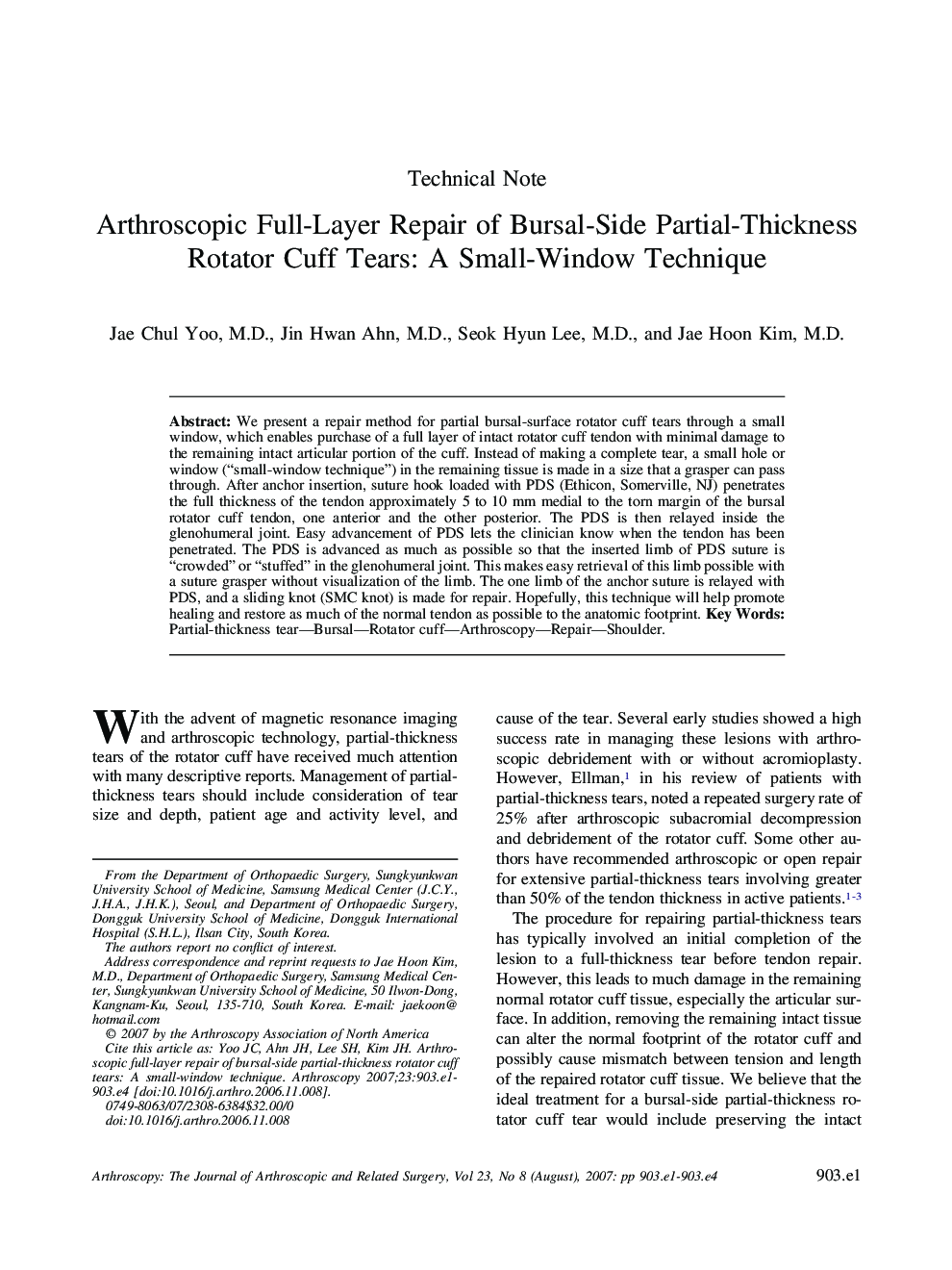| Article ID | Journal | Published Year | Pages | File Type |
|---|---|---|---|---|
| 4047508 | Arthroscopy: The Journal of Arthroscopic & Related Surgery | 2007 | 4 Pages |
Abstract
We present a repair method for partial bursal-surface rotator cuff tears through a small window, which enables purchase of a full layer of intact rotator cuff tendon with minimal damage to the remaining intact articular portion of the cuff. Instead of making a complete tear, a small hole or window (“small-window technique”) in the remaining tissue is made in a size that a grasper can pass through. After anchor insertion, suture hook loaded with PDS (Ethicon, Somerville, NJ) penetrates the full thickness of the tendon approximately 5 to 10 mm medial to the torn margin of the bursal rotator cuff tendon, one anterior and the other posterior. The PDS is then relayed inside the glenohumeral joint. Easy advancement of PDS lets the clinician know when the tendon has been penetrated. The PDS is advanced as much as possible so that the inserted limb of PDS suture is “crowded” or “stuffed” in the glenohumeral joint. This makes easy retrieval of this limb possible with a suture grasper without visualization of the limb. The one limb of the anchor suture is relayed with PDS, and a sliding knot (SMC knot) is made for repair. Hopefully, this technique will help promote healing and restore as much of the normal tendon as possible to the anatomic footprint.
Related Topics
Health Sciences
Medicine and Dentistry
Orthopedics, Sports Medicine and Rehabilitation
Authors
Jae Chul M.D., Jin Hwan M.D., Seok Hyun M.D., Jae Hoon M.D.,
